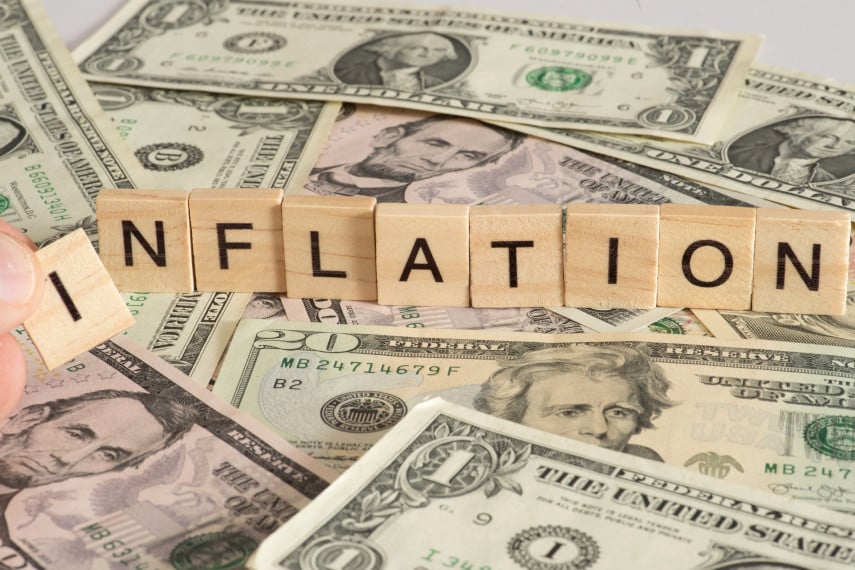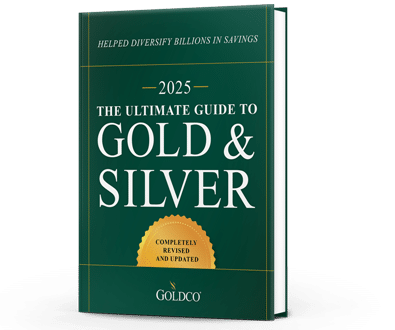6 Indicators of a Potential Recession
It seems that in the media today there are more and more mentions of the dreaded R-word: recession With growing economic uncertainty, the threat of potential recession seems to be growing as...
Economy

Only a few years ago inflation in the United States was the highest it had been in over 40 years. People across the country were impacted by high gas prices, high food prices, and expectations of even higher prices in the future.
Now that inflation has been somewhat tamed, we don’t hear about it nearly as much, but does that mean the problem has gone away?
If you go shopping at the grocery store on a regular basis, you’re probably well aware that prices are far higher today than they were five years ago. But while the pace of inflation may not be as great as it was a few years ago, that doesn’t mean inflation has completely disappeared.
Here’s why inflation could remain problematic.
Let’s first get the definition of inflation out of the way. Inflation as it has traditionally been understood is a rise in the supply of money, the effect of which, all other things being equal, is a rise in prices.
Most mainstream modern economic schools have substituted effect for cause, and now define inflation as a general rise in the price level, something that in times past would have been referred to as “price inflation.”
While that may be problematic for economic theory, for our purposes in discussing inflation we’ll run with the modern definition of inflation since that’s what most people today refer to when talking about inflation.
That brings up the question of what is the price level?
Here we’ll look at three different price level indices of inflation:
Each of these can also be further broken down into “core” and “headline” figures. Core CPI, PPI, and PCE are those figures from which food and energy prices have been stripped out, as these prices can be vulnerable to volatile swings due to weather, political unrest, or other unpredictable factors.
The headline figures are the overall figures with energy and food included, and give the broadest overall sense of prices.
The consumer price index is the inflation index that is supposed to most closely reflect the price increases seen by consumers. In mid-2022, the annual CPI change hit 9%, the highest level in 40 years.
Since that time CPI has decreased significantly, but it still has a ways to go before it reaches the Federal Reserve’s 2% target. CPI struggled to break below 3%, and momentarily blipped back up to 3% in January.
The latest CPI numbers show a 2.8% year-on-year increase, but consumers and policymakers are going to want to see whether those numbers can push further downward towards 2%.
The producer price index is supposed to reflect the costs producers of goods and services see. The particular index that is cited in headline data is the producer price index (PPI) for final demand, which reflects the prices received by producers for finished goods and services.
PPI numbers can often be higher and more volatile than CPI numbers. PPI peaked at 11.6% in March 2022, and has since fallen back to 3.2% in February, up from 0.3% in June 2023. Looking at PPI charts, the general trend since June 2023 has been upward once again.
PPI final demand data only goes back to 2010, so to look at how these numbers compare historically, we have to look at various other PPI indices, such as the PPI index for final demand for finished goods.
That index peaked at over 18% in mid-2022, the highest level since 1974. Various other PPI indices showed similar behavior, indicating that producers may have seen even more volatility in prices over the past few years than consumers did.
Personal consumption expenditures is “a measure of the prices that people living in the United States, or those buying on their behalf, pay for goods and services.” Unlike CPI and PPI, which are published by the Bureau of Labor Statistics, PCE figures are published by the Bureau of Economic Analysis.
Whereas CPI is a pure index, PCE itself is a measure of the total amount of money spent by Americans. These figures are then used to create a PCE index, which is the Federal Reserve’s preferred method of calculating inflation.
The PCE index peaked at 7.2% year-on-year increases in mid-2022, and is currently showing a 2.5% year-on-year increase, up from 2.1% in September 2024. Once again, like the other inflation indices, the PCE index fell and is now rising again.
It’s hard to say right now where inflation might be headed. Looking back historically at the 1970s stagflation, it was characterized by peaks and troughs, including periods in which it looked like inflation was coming back down to more normal levels.
Could recent inflation moves mean that inflation is going to pick back up again? Could this be a temporary blip after which inflation will once again resume falling? Or could this be a long-term level at which inflation is going to stay for a while?
It will likely require many more months of data and observation before any long-term trend in inflation becomes apparent. But there are plenty of things that could happen between now and then that could impact inflation.
Perhaps first and foremost at the front of most people’s minds is the potential impact of Trump’s tariffs. Any price increases as a result of tariff increases could result in increases in the CPI, PPI, or PCE figures.
That, in turn, could impact how the Federal Reserve decides to go forward with its conduct of monetary policy. It will have to figure out, if inflation figures rise, how much can be attributed to tariffs versus monetary factors.
The Fed will also have to take into account the potential for recession, as fears of recession and stock market crashes have come to the fore after stock markets saw red in the days following Trump’s Liberation Day tariff announcement.
If the Fed ends up cutting rates to try to forestall a recession, it could end up pushing inflation even higher. So the Fed could find itself between a rock and a hard place, having to weigh potentially higher inflation on the one hand and potential recession on the other.
Millions of Americans may have to deal with those possibilities as well, with fears of inflation and recession as a result of Trump’s tariffs rocking financial markets and eroding the value of assets held in 401(k) and IRA accounts.
If markets continue to decline, Americans could see trillions of dollars of wealth wiped out of their retirement accounts. And that’s why so many Americans today are starting to look to precious metals like gold and silver to help safeguard their portfolios.
Gold and silver have served as safe haven assets for centuries, helping people navigate financial turmoil and economic uncertainty. And with a gold IRA or silver IRA you can even own physical gold or silver within a tax-advantaged retirement account.
Precious metals IRAs allow you to acquire gold or silver coins or bars using the assets in your existing assets in your 401(k), 403(b), TSP, IRA, or similar retirement accounts. In most cases the rollover from these accounts into a gold IRA can be done tax-free, allowing you to benefit from owning gold while still enjoying the same tax advantages as any other IRA account.
If you’re worried about the threat of inflation, recent weakness in markets, or the potential for recession, maybe gold and silver are worth looking into. And Goldco’s representatives can help.
With over 6,000 5-star reviews from our satisfied customers and over $3 billion in precious metals placements, Goldco works hard to provide our customers with quality precious metals products and exemplary customer service.
Call Goldco today to learn more about how you can put gold and silver to use in helping safeguard your financial future.

